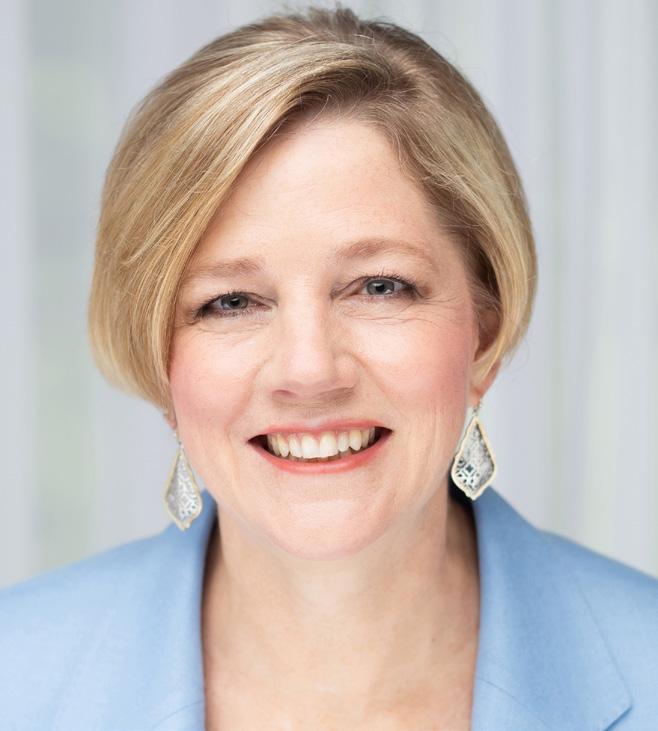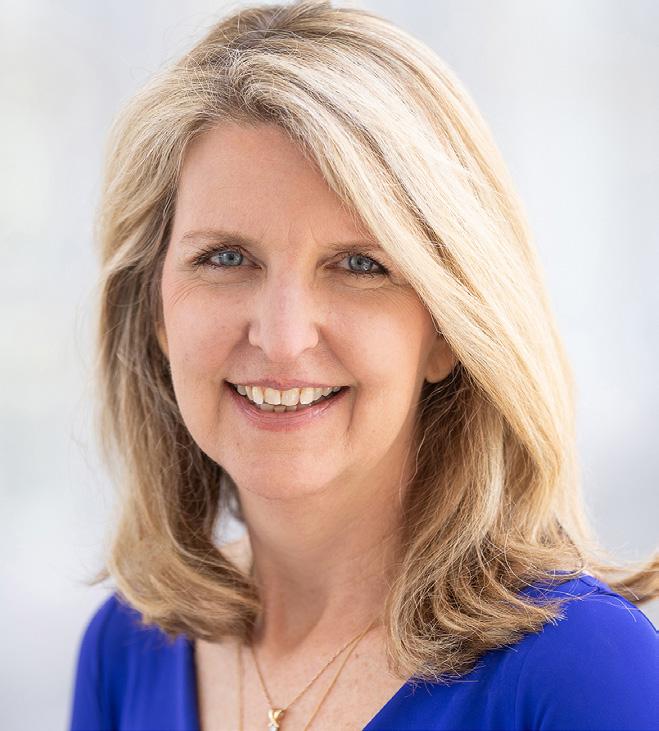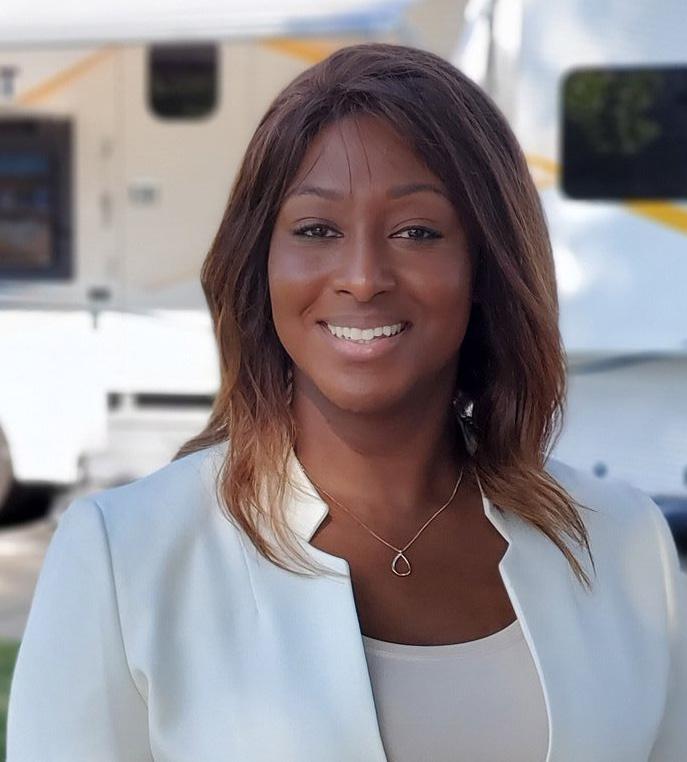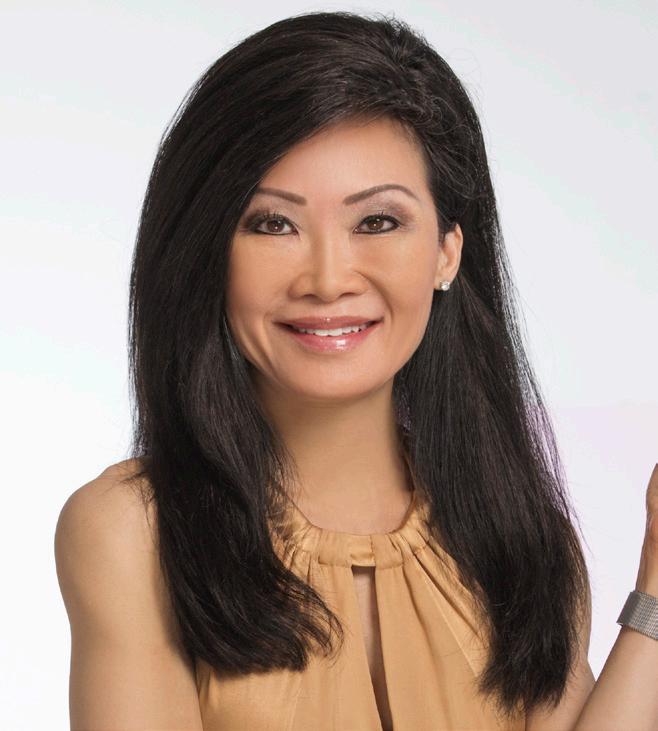
10 minute read
Women in Health Care
By BECKY GILLETTE
hile about 80% of health care workers are women, fewer than 20% hold key leadership positions, according to the Bureau of Labor Statistics. “It takes purposeful attention to the career advancement of women to shift the percentage in senior leadership ranks,” said Marcy Doderer, president and CEO of Arkansas Children’s Hospital in Little Rock. “Throughout my career, I have seen progress in women having leadership roles in health care.
“I’m tremendously proud that our senior leadership team at Arkansas Children’s is 57% women-led. As a woman in health care, I’ve always taken it upon myself to identify, support and elevate qualified women into leadership roles, which I hope will impact the broader industry.”
Understanding that barriers to advancement exist based on gender, age and other biases, Doderer worked very hard to make sure she had the necessary academic and experiential background to succeed as a health care executive when the opportunity presented itself.
“I had tremendous mentors, both men and women, who gave me new opportunities and supported me along the way,” Doderer said. “It was sometimes challenging to find my own voice at an all-male table and to speak up in a way that established inclusivity for all leaders. However, I embraced my various roles throughout my career with authenticity and courage, and I believe that is one of the reasons I’m a CEO today.”
Her advice to other women is to dedicate themselves to something they are passionate about and find ways to prepare along the professional journey for the next opportunity. Then, when an opportunity presents itself, embrace it. She also said mentors provide invaluable support to a person’s success and can help one overcome hurdles and barriers. Preparation is also key in gaining the confidence and competence to be successful.
WFor more than two decades, the number of women accepted into medical schools across the U.S. has been roughly on par with men. Yet a large gap still remains in terms of the number of women leaders in academic medicine, said Dr. Susan Smyth, dean of the University of Arkansas for Medical Science School of Medicine. In 2002, 49.2% of the students matriculating into U.S. medical schools were female, per American Association of Medical Colleges FACTS data. In 2021, the AAMC data for all academic medical schools in the U.S. indicates that about 60% of the instructors are women, 48% are assistant professors, 40% are associate professors, 28% are full professors, 22 % are chairs and 22% are deans. There has been a steady increase in the overall percentage of women in the physician workforce, from 28.3% in 2007 to 36.3% in 2019. According to AAMC data from 2019, the specialties with the highest percentages of women are primarily focused on care to women and children, including 64.3% in pediatrics, 58.9% in obstetrics and gynecology, 54% in child and adolescent psychiatry, and 52.8% in neonatal-perinatal medicine. Based on data published by Becker’s Hospital Review 2020 and Medscape 2021, specialties with lower than 15 percent female representation include orthopedics, neurosurgery, urology and cardiology. “In my field of cardiology, women account for only 14% of practicing cardiologists,” Smyth said. “Despite the fact that women make up more than 40% of internal medicine residents, only 25% of cardiology fellows are women.”

Marcy Doderer, FACHE Susan Smyth, MD, PHD Margaret Love, DNP,APRN, FNP-BC


Smyth said reasons for the sluggish increase in females at higher ranks include women often getting a slower start to their careers as they balance outside commitments. Women tend to have more family responsibilities; an American College of Cardiology Survey of Professional Life revealed women were more likely to have interruptions of training or career for greater than one month, and the most common reasons were for pregnancy and childbirth.
“The impact of work and life commitments on the early phase of a physician’s career, when family needs and career demands are at their highest, likely have long-term impacts on the trajectory of women’s careers,” Smyth said.
Smyth said limited availability of mentors and sponsors can also impact the upward leadership trajectory for women. Other elements that may disproportionately affect women include implicit bias, traditions and hierarchy that favor men in the selection and promotion process.
“Women tend to prioritize values differently from men, and this may make leadership roles less desirable if the organization’s values are not aligned with those of qualified women,” Smyth said.
Meanwhile, the vast majority of nurses are women, both nationwide and in Arkansas, a statistic that has remained unchallenged throughout the profession’s history.
“Nurses provide most health services as the largest single force of health care workers worldwide,” said Margaret Love, UAMS nursing instructor and president of the board for the Arkansas Nurses Association in Little Rock. “Becoming a nurse opens up opportunities, allowing them to receive a formal education, enroll in training programs, secure a license and, finally, get a job while reaping the benefits of a steady income.
“Nursing is responsible for better health, stronger economies and gender equality. How nurses improve health is well-understood, but stronger economies and equality in the workplace are just as important.” The rapidly evolving job of a nurse is highly demanding, but as Love points out, it is also more financially rewarding than ever and that trend is expected to continue in the years to come. Nurse compensation in Arkansas varies by region, specialty and training or advanced education with urban centers offering the highest pay. The BLS
Dedicate yourself to lists the median pay for nurses in Arkansas at $65,810 annually in 2021 and as of something you are September 2022, Salary.com reports an annual median salary of $61,541. Arkansas is ranked 47th compared to the passionate about and national average of $82,750 annually. While nursing pay is higher than find ways to prepare ever before, pay for nursing instructors has not caught up. ARNA is working along your professional alongside other professional nursing organizations and legislators to address journey for the next nurse educator pay, as it presents a major roadblock to attracting new educators opportunity. and, in turn, training more nurses. A growing challenge lies in the fact nurses are increasingly subject to workplace violence, including the immediate and long-term carnage and death caused by gun violence. “In 2018, health care and social service workers were five times more likely to experience workplace violence, according to the BLS,” Love said. “However, the recent shooting at a Tulsa medical facility actualized the worst possible scenarios. The impact of this horrendous event cannot be overstated. Fear and anxiety in the profession are at an all-time high. “The American Nurses Association reports that one in four nurses is assaulted at work, and nurses are four times more likely to experience violence at work than people in any other profession. Risk of illness, stress, anxiety, depression, burnout and workplace violence are some issues driving nurses away from the bedside.” Love said ARNA stands with Arkansas employers that have enacted

Brookshield Laurent, DO Dr. Suzanne Yee, MD, FACS

measures increasing safety and access to programs addressing employees’ overall well-being, including mental health. Development of processes to identify and respond to threats, limiting public access points, increased facility monitoring and violence de-escalation training are some ways for employers to take immediate action.
“All nurses should be afforded a safe and healthy work environment,” Love said. “We will continue to introduce and support legislation to strengthen the current workplace violence laws in the state.”
The NYIT College of Osteopathic Medicine at Arkansas State University in Jonesboro believes in ensuring diversity in all aspects of its institution, said Shane Speights, dean.
“That certainly includes the value we place on gender equity,” Speights said. “Of our first seven admitted classes, 48 percent of enrolled students were women. We are very fortunate to have strong female representation in our COM leadership as well. All three of our department chairs are women. Additionally, our associate dean of academics and our assistant dean of academic achievement are women, as is the dean of our parent institution in New York.
“We enroll a significant number of future female physicians, and we have an outstanding group of female leaders to train and mentor these women throughout their medical education at NYITCOM. Studies are clear that people want to see physicians that look like themselves and can relate to them. That’s why it’s incredibly important to train health care providers who address every aspect of diversity.”
Representation and creating an inclusive workplace are extremely important, said Dr. Brookshield Laurent, chair of clinical medicine.
“Mentorship, guidance and investment in professional development are vital to helping women become physician leaders,” Laurent said. “We are very purposeful in that at NYITCOM at A-State, as evidenced by the female representation amongst our senior leadership team and the number of female physicians that serve as clinical faculty.
“If we want to see more women in leadership in health care, there must be more women involved in policy design in the workplace. They must be engaged, and their voice must be counted to help shape policies that support the context of the multiple roles women fulfill in life. Doing so could have a significant impact on an organization’s bottom line through increased productivity and employee retention, as well as the fact that consumers look favorably on organizations that prioritize representation.”
Just finishing a surgical subspecialty or any residency in medicine breaks glass ceilings in health care, said Dr. Suzanne Yee, longtime plastic surgeon and clinic owner in Little Rock.
“By owning my own practice, the ceiling is as high as I want it to be, and it allows me to set my goals as high as I would like. The sky’s the limit,” Yee said. “I can also relate to what women are striving for. I have a family, expenses, work and the same stresses that most other women have. Communication, compassion and understanding are so important.”
Yee said the autonomy that comes with having her own practice is another big plus.
“I can direct the patient care and tailor it to the type of practice and care that I want to give our patients,” Yee said. “Also, owning your practice gives you the ability to choose the most qualified people to work with patients, from answering the phone to patient care. In private practice, I can also add or remove treatments or procedures that I feel are effective for our patients without having to go through a lot of red tape.”
Yee gets a lot of self-satisfaction from the spirit of teamwork that exists among her employees, as it produces the kind of quality care that results in happy patients.
“I am fortunate to have a husband who handles much of the finances and a great staff that works with me as a team,” Yee said. The biggest challenges in owning one’s own practice, Yee said, is maintaining a quality staff, managing client expectations, watching expenditures, and not letting the small things get to her. Integrating this into a plastic surgery practice can be a challenge because the demands of each day vary widely.
“If we have an emergency or any other issue, like a laser suddenly not turning on, then we have to be able to make changes and just flow with it and know how to handle the situation,” Yee said. “Owning and running a plastic surgical practice not only takes determination, foresight and persistence, but long hours juggling many different aspects of the health care world and business. It also takes some creativity, artistry, compassion and dedication to making sure that you do the best you can for your patients and your staff.”










